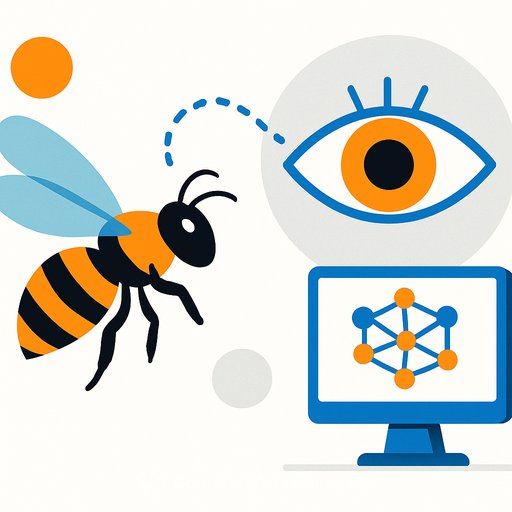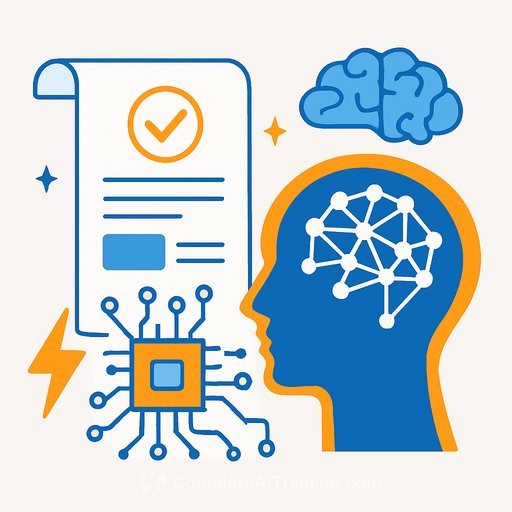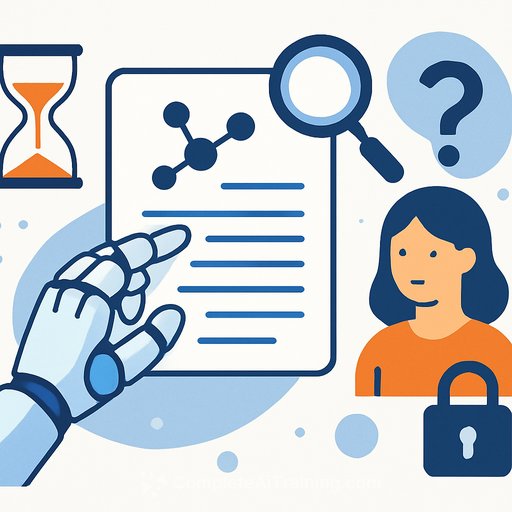Bee Brains Show How Movement Makes Vision Efficient - And What That Means for AI
Bees don't passively look at scenes. They move, sample, and refine what the brain receives. That loop - action shaping perception - is the core finding from a new digital model of a bee brain built by UK researchers.
The model shows that flight movements sharpen neural signals so a tiny brain can read complex patterns with high accuracy. Think sparse, energy-aware computation rather than brute-force processing.
Key insight: perception is active
Neural circuits in bees are tuned to spatiotemporal cues created by their own motion. As a bee flies, its neurons adapt to directions and optic-flow features, refining responses through exposure rather than explicit rewards.
That yields a compact code: only a small set of neurons needs to fire to recognise patterns. The result is efficient recognition with low energy and limited compute.
The experiment that grounds it
Researchers validated the model on the same visual tasks real bees face. In one test, discrimination between a plus sign and a multiplication sign improved when the model scanned only the lower half of the patterns - mirroring bee behaviour observed previously.
Focused movement created cleaner signals and better decisions. Active sampling mattered more than adding complexity to the network.
Why this matters for AI and robotics
- Movement as a query: Let the agent move to generate informative sensory input instead of waiting for rich input to arrive.
- Spatiotemporal encoding: Encode features that emerge from motion (optic flow, edges across time) to simplify classification.
- Sparse, energy-aware compute: Favour circuits where a small subset of units carry most of the signal.
- Learning without explicit rewards: Use exposure-driven adaptation to tune responses before task rewards enter the loop.
- Task-specific scanning: Constrain where and how the sensor looks (e.g., lower half scans) to cut noise and boost reliability.
Design principles you can test
- Couple policy and perception: Train an action policy whose goal is to maximize discriminability of downstream features, not just task rewards.
- Use event cameras or fast global-shutter sensors to capture motion cues with low latency.
- Implement local learning rules (e.g., STDP/Hebbian variants) to tune direction-selective units from continuous exposure.
- Build sparse readouts: a small, selective layer that triggers decisions from motion-derived features.
- Adopt active scanning patterns per task (striped sweeps, lower-half scans) and benchmark their effect on error and energy.
Example workflow (lab to field)
- Simulate: Agent in a 2D/3D environment learns a scanning policy that maximizes class separation given limited neurons.
- Prototype: Mount an event camera on a micro-robot; implement direction-selective filters and a sparse classifier.
- Evaluate: Reproduce the plus vs. multiplication test; compare full-frame vs. constrained scans for accuracy and joules per inference.
- Deploy: Extend to face-like or flower-like patterns, then to wayfinding cues and landing site selection.
Implications for research roadmaps
- Shift from static datasets to closed-loop sensing benchmarks where the model controls its viewpoint.
- Prioritize efficiency metrics (energy, memory footprint, latency) alongside accuracy.
- Study stability: how exposure-driven tuning behaves under domain shifts and clutter.
- Translate to neuromorphic hardware for real-time, low-power active vision.
Where to read more
The research is published in eLife as "A neuromorphic model of active vision shows how spatiotemporal encoding in lobula neurons can aid pattern recognition in bees." For journal context, see eLife.
For practitioners building skills
If you're mapping these ideas to your stack - from active perception to neuromorphic methods - you can explore curated training paths by role at Complete AI Training.
Bottom line: smarter sensing beats bigger models. Let the body move, let the scene respond, and let the brain learn the difference that movement makes.
Your membership also unlocks:






